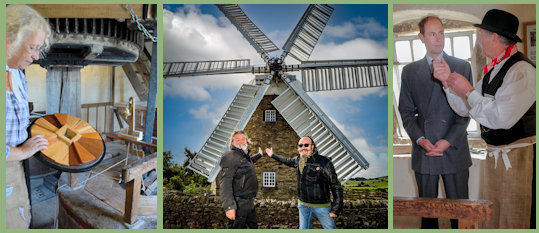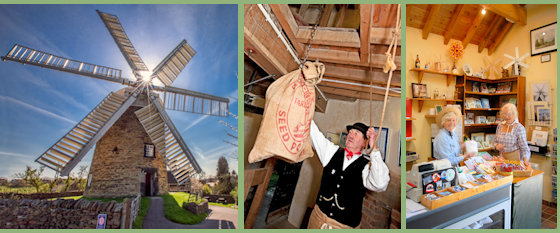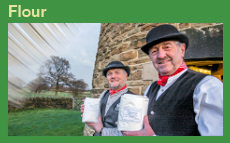Heage Windmill is proud to produce and sell stone ground flour, in various grades, using essentially traditional methods.
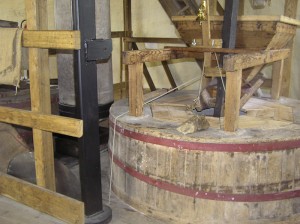
In order to maintain the quality of the product, it is necessary to clean and sharpen the grooves which are cut into the millstone. In days of old, itinerant stone dressers toured wind and water mills and performed this essential task for the miller.
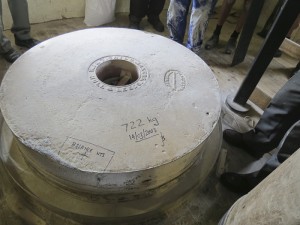
Today there are no such skilled men to hand and so it has been necessary for the team of maintenance volunteers at Heage Windmill to learn how to do this themselves.
Some of the longstanding mill workers are now getting ‘ a bit long in the tooth’ and this year the opportunity was taken to pass their experience on to newcomers.
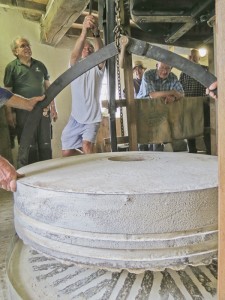
In order to carry out this operation it is necessary to lift and turn the runner ( or top stone) exposing the faces used in grinding the flour to enable them to be serviced.
The runner stone at Heage weighs 722 kilos (nearly 1600 lbs) and this has to be carefully raised and then swung out, to be turned over and laid on its back, with due attention being paid to relevant Health & Safety issues.
Brian Naylor, the Mill Maintenance manager, gathered a team of workers to the site last week and, guided by experienced miller John Boucher, performed the task, which went off without a hitch.
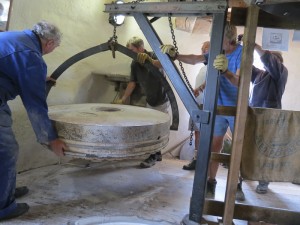
The runner stone was lifted by a temporary crane which was erected over the stones and the actual lift carried out in the traditional manner, using scissor-like grips with pegs which fit into pre-existing holes in the stone. The lift was powered by a modern pull lift, although in the old days wedges and pulleys would have been used!
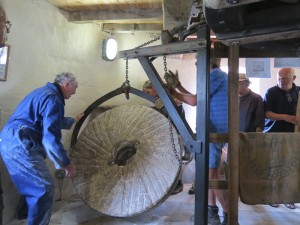
Once turned over, both stones could be closely examined to establish if there were any high spots, (there weren’t!) and all surfaces cleaned. The grooves and cutting faces were then sharpened using hand operated, traditional mill bills which chip away and sharpen any worn areas.
For several hours the mill rang to the sound of hammering whilst the various team members tried their hand at the dressing process, until the two stones met the high standard demanded by John.
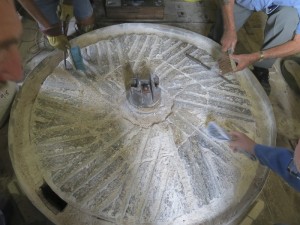
Once completed, the runner stone had to be raised and turned again and then carefully lowered back onto to its bearings and the rest of the milling ‘furniture’ – or equipment – was re-installed. All in all, a long day’s work, but one which proved very satisfying to those involved and which will hopefully ensure Heage Windmill will continue to produce high quality flour.
The Trust expressed its sincere thanks to all who worked so hard in performing this very necessary task.



